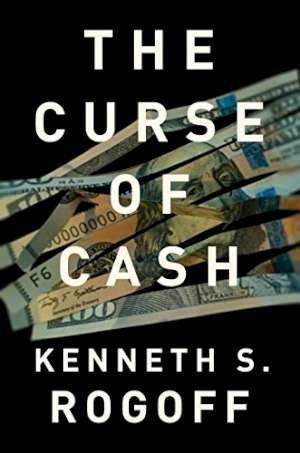02 March 2017
The Curse of Cash
Kenneth S Rogoff
2016, Princeton University Press, 283 pages,
Reviewer: Ian Bright

The curse of cash is essentially two short, related pamphlets packaged as one book.
The first 100 pages make the case for abolishing most forms of paper currency in favour of more electronic, mobile and card payments. The second section argues central banks should be willing to – and indeed may need to – set interest rates far into negative territory to stimulate activity. Overall, it makes a persuasive case for phasing out the use of cash.
Despite the growth of alternative payment methods such as debit cards, mobile and contactless, demand for cash remains huge. However, much of that cash is accounted for by large denomination bills. In the US, more than 80% of cash consists of $50 bills or higher. In the UK 69% is in £50 notes. In the Eurozone, 91% is in €50 notes or higher (table 3.1). However, large notes are not typically used for everyday transactions, as the median cash in people’s wallets amounts to$37 in the US, €114 in Austria and €94 in Germany (table 4.1).
What explains this pattern? Much of the physical cash in circulation appears to support criminal activities including tax avoidance, and the sums involved are fairly large. In the US, small business owners report less than half their income and account for 52% of a ‘tax gap’ estimated in 2006 at $450 billion. Non-compliance with VAT in Europe is estimated to range between 4% and 17% of GDP. The underground economy is estimated to be equivalent to 7.1% of GDP in the US ($1.3 trillion) but is higher in Europe ranging from 7.9% in Switzerland to 25.0% in Greece. Eliminating large notes but leaving smaller ones in circulation would not disturb the everyday life of most people. However, it would draw many activities into the tax net. The money raised would pay for the loss of seigniorage and the costs of setting up systems for those without bank accounts and it is also likely to contribute to a fairer society.
On negative rates, Rogoff questions the effectiveness of policies such as quantitative easing and helicopter money. To effectively stimulate activity, Rogoff notes some estimates that rates may need to fall to as low as minus 5%. The effectiveness of negative rates, however, would be reduced as people could increase the amount of cash they hold rather than leave money in the bank at negative rates. Eliminating cash is not necessary to achieve negative rates. Various schemes that would progressively reduce the value of currency are discussed. These include stamping currency and a dual currency system where money used in transactions is accounted form differently to that used between banks.
On considering the relative merits of the two cases for eliminating cash, Rogoff favours the first. “Facilitating negative interest rate policy is not the main reason for phasing out paper currency, especially large denomination notes, but it is an important collateral benefit,” he concludes.
